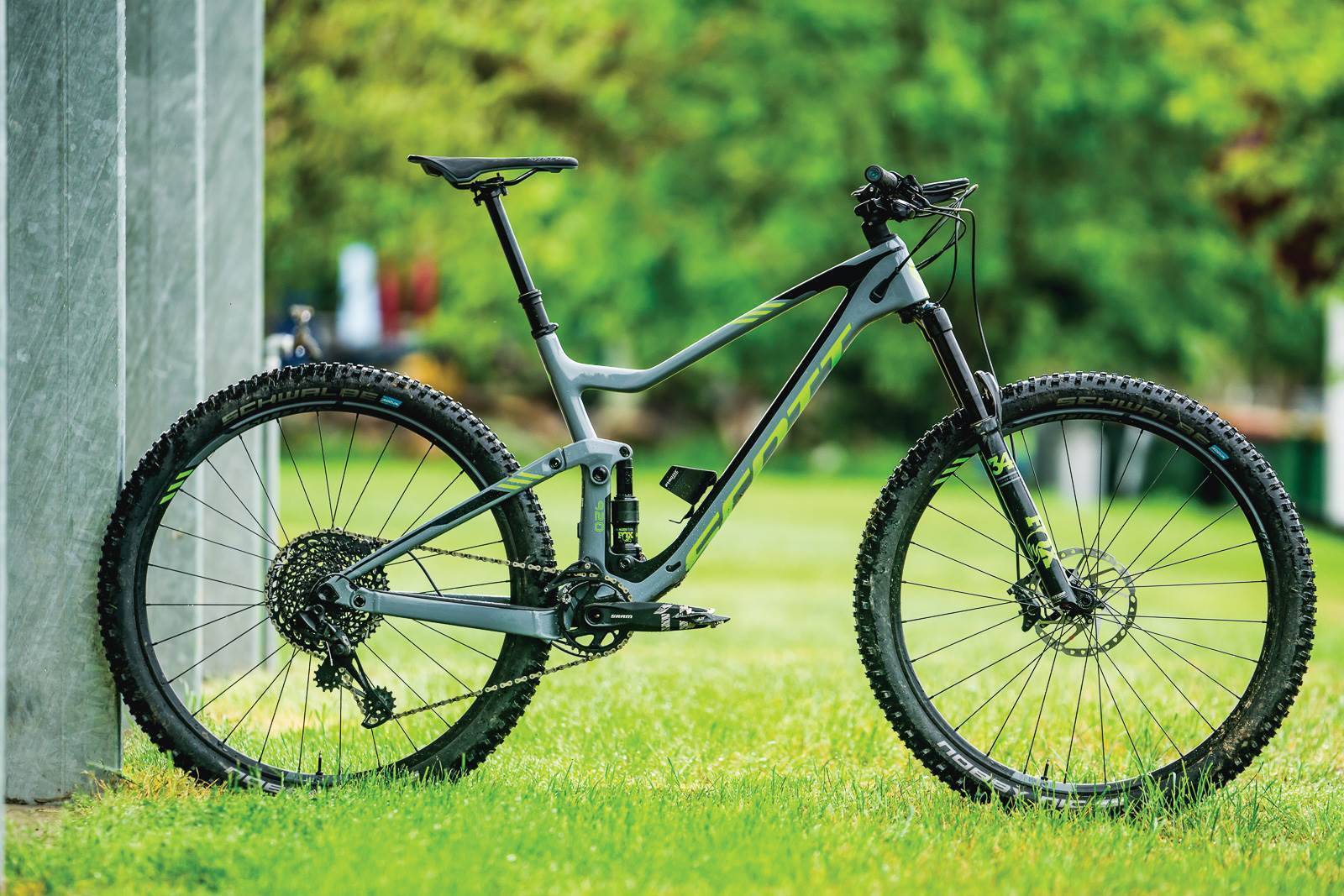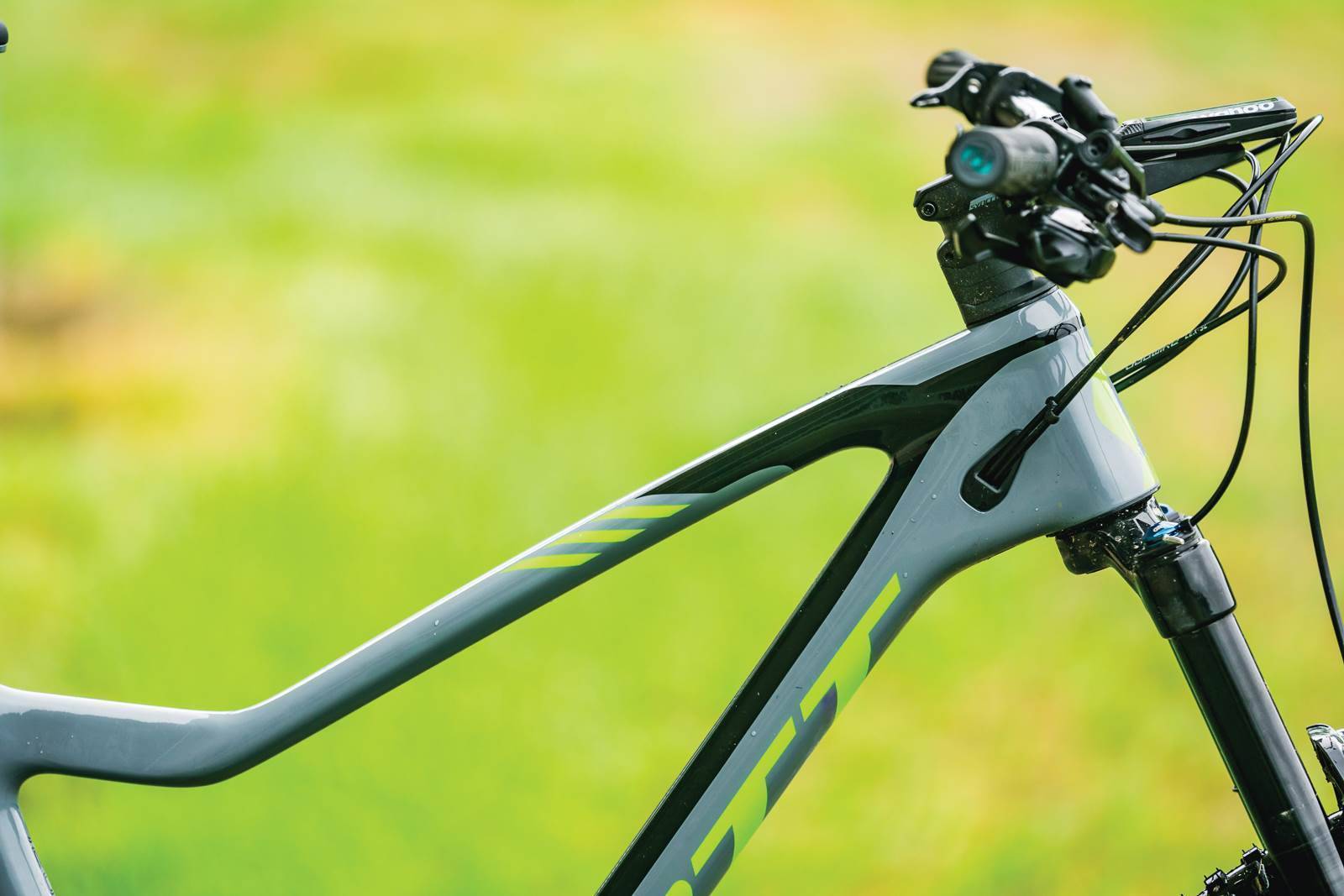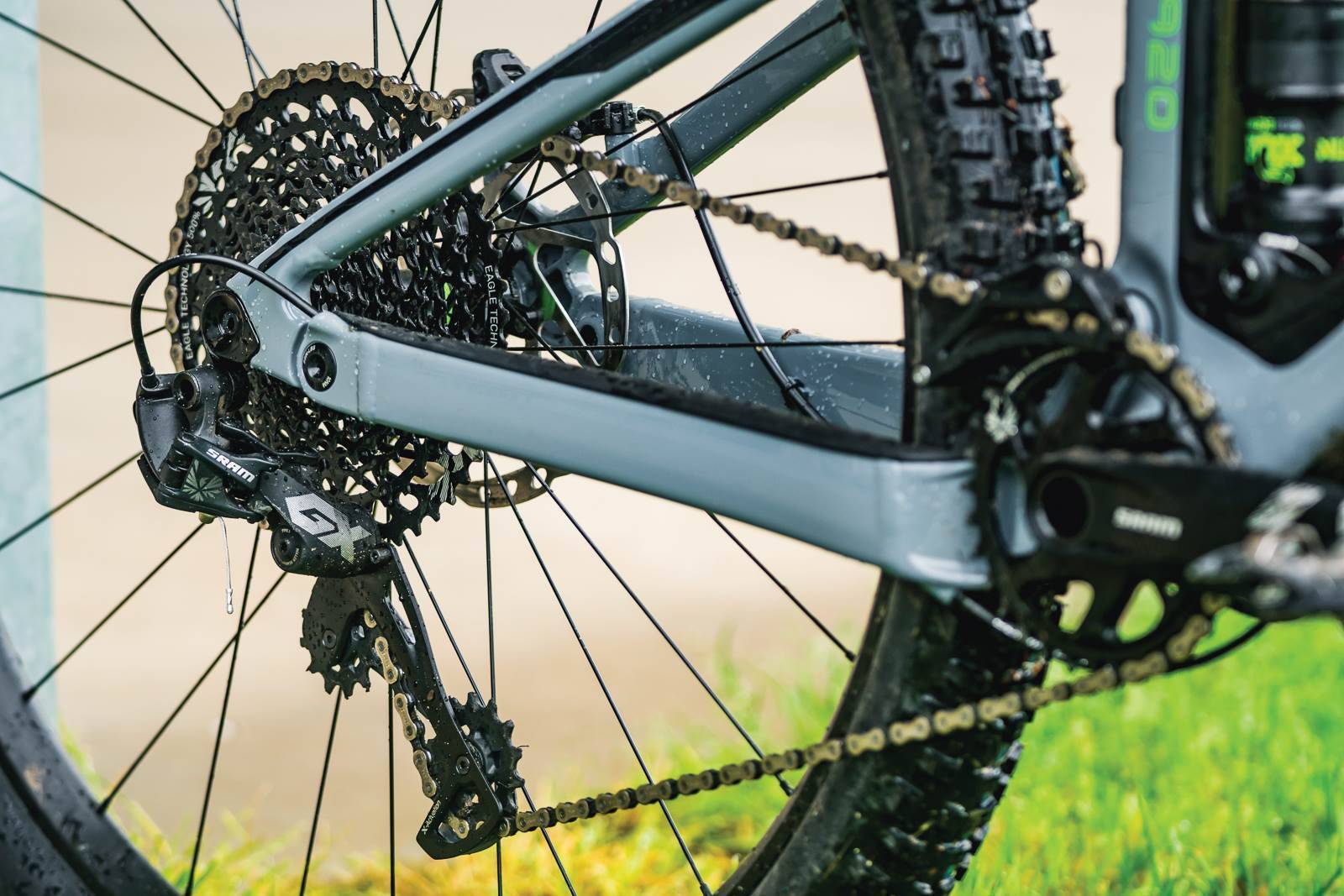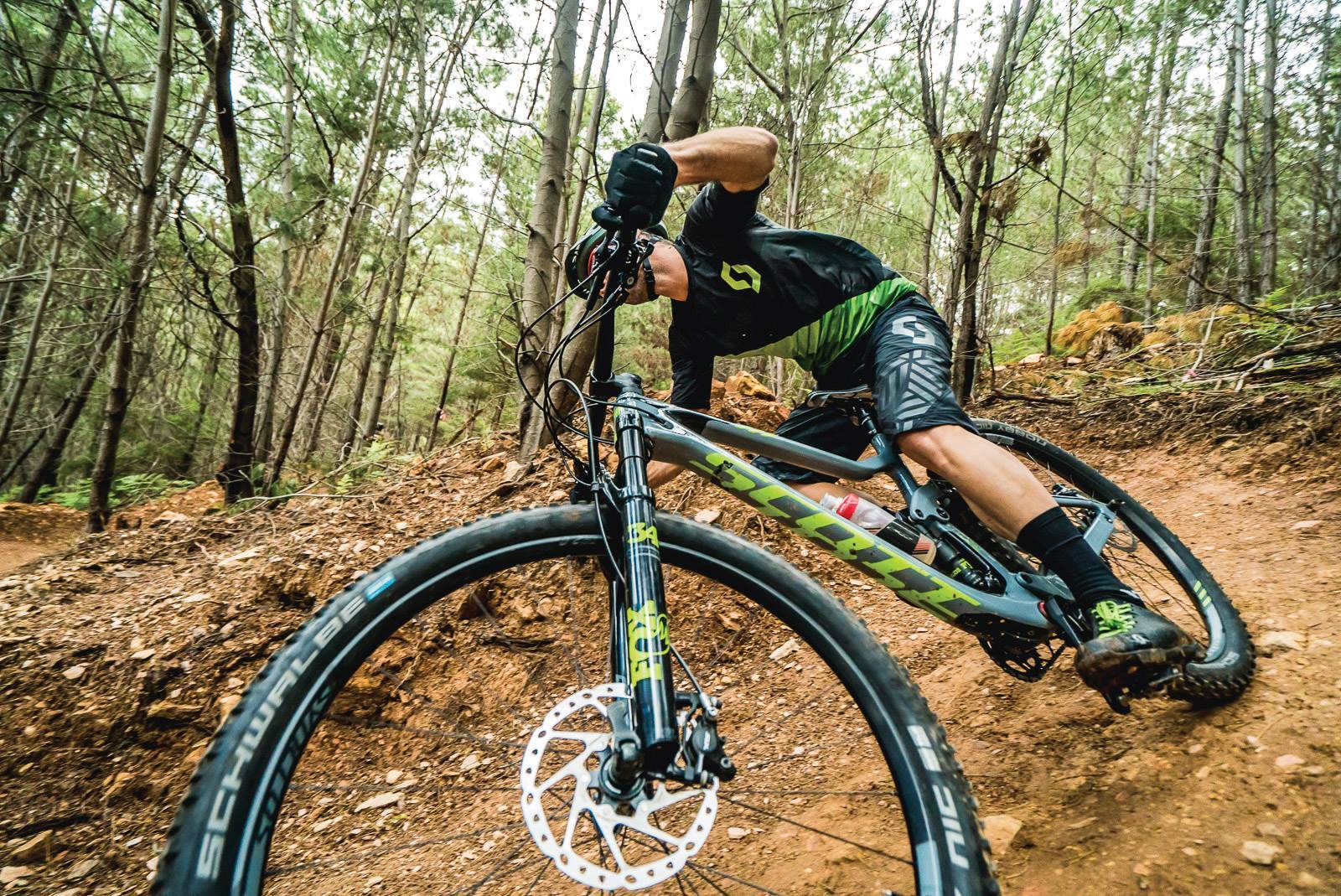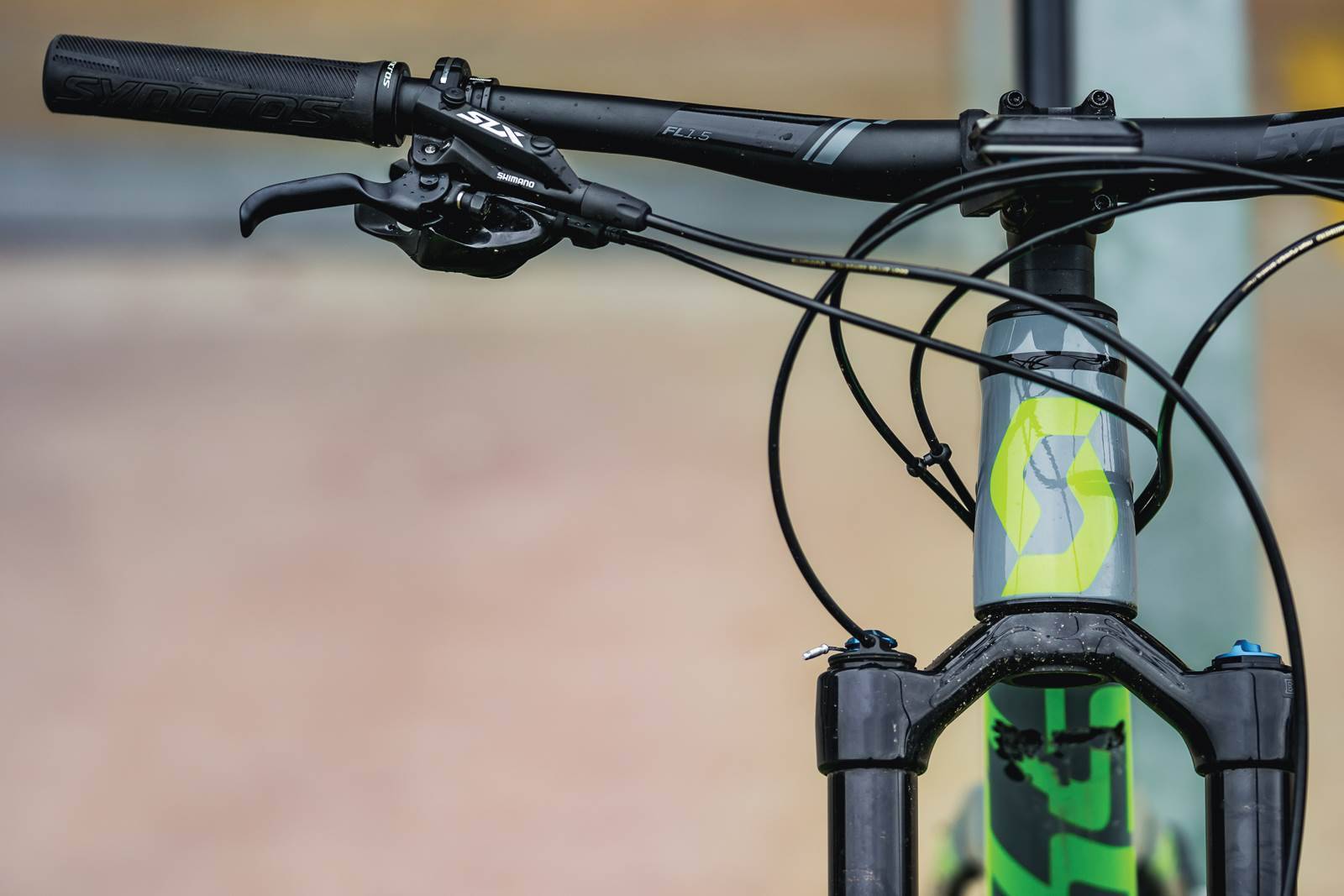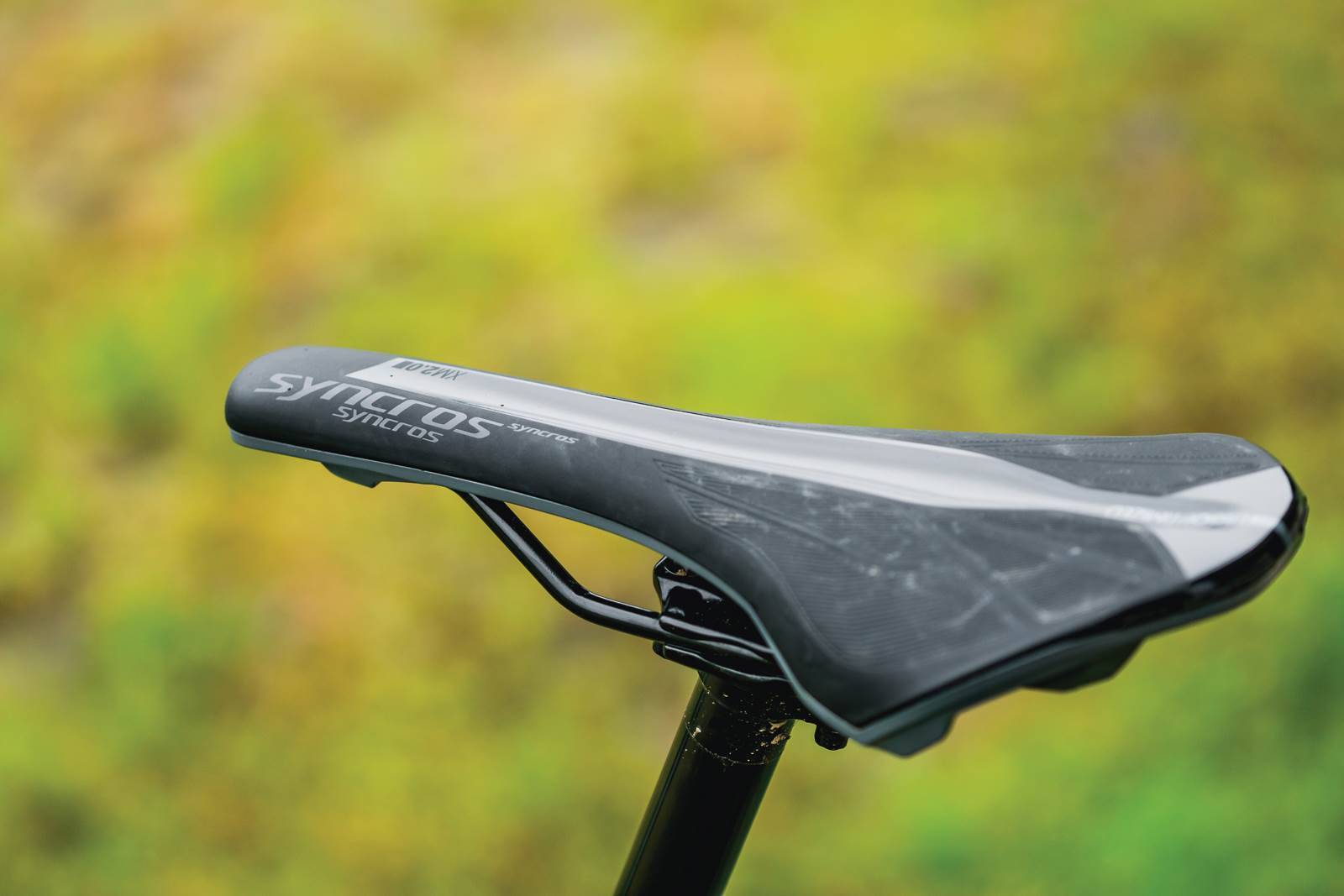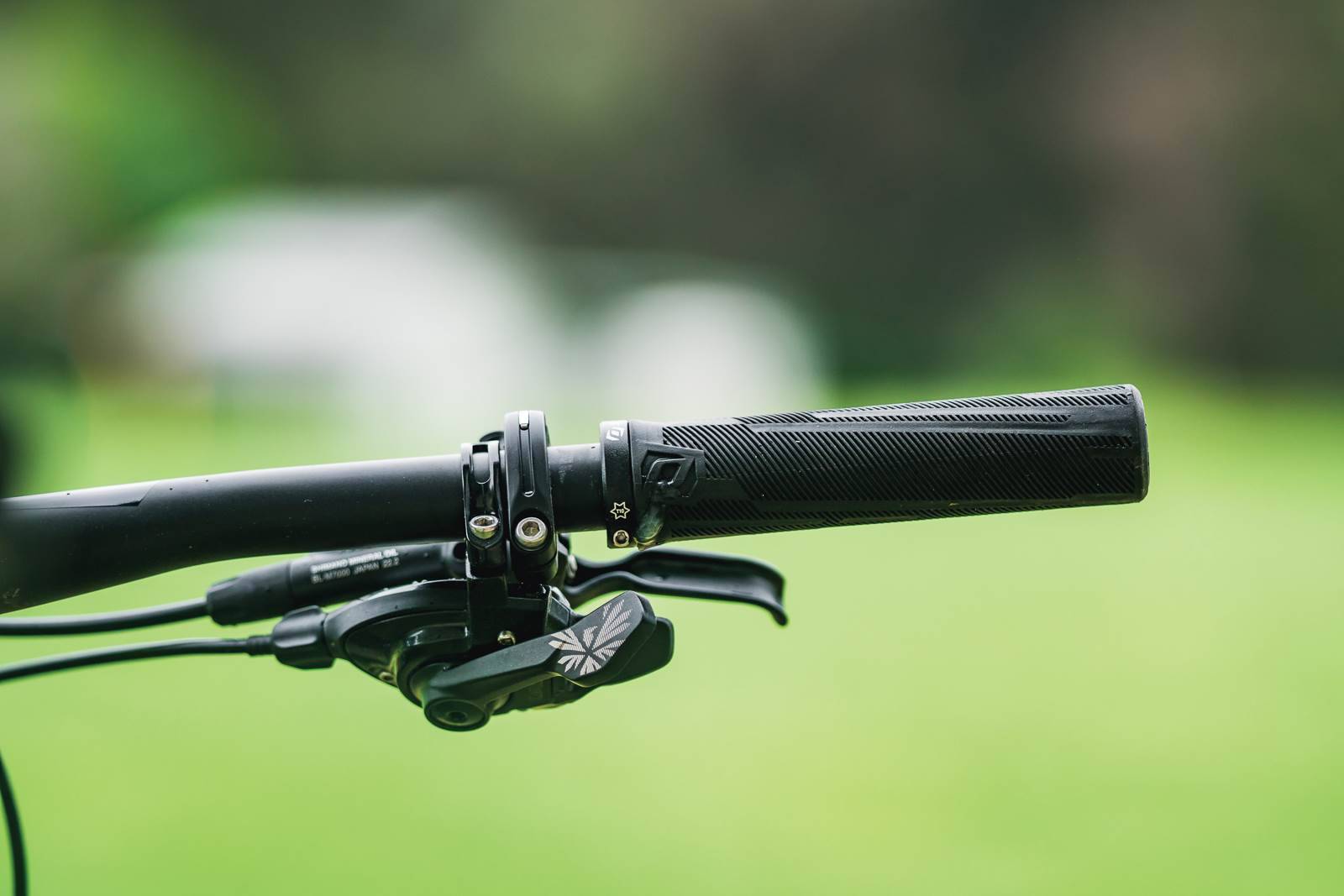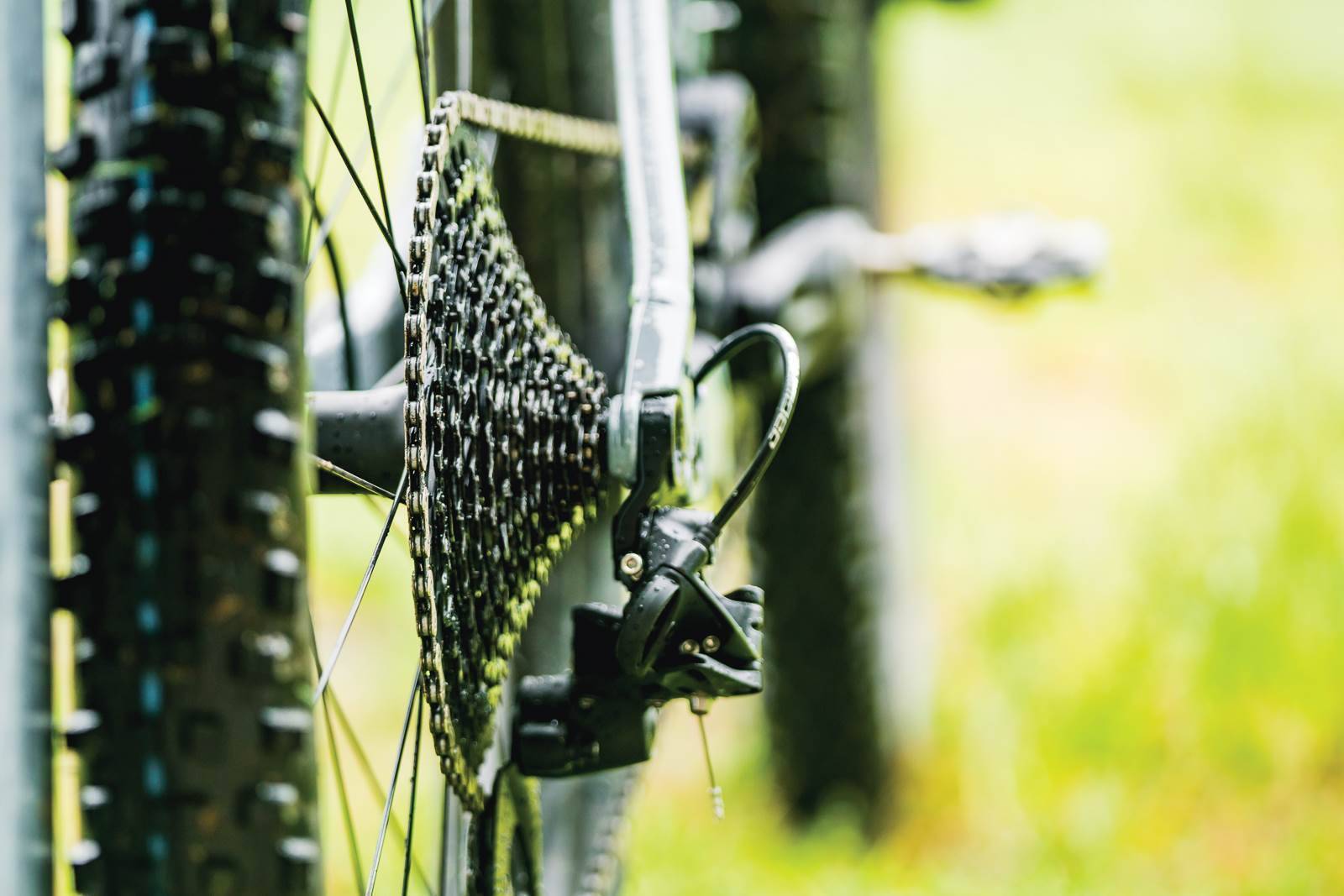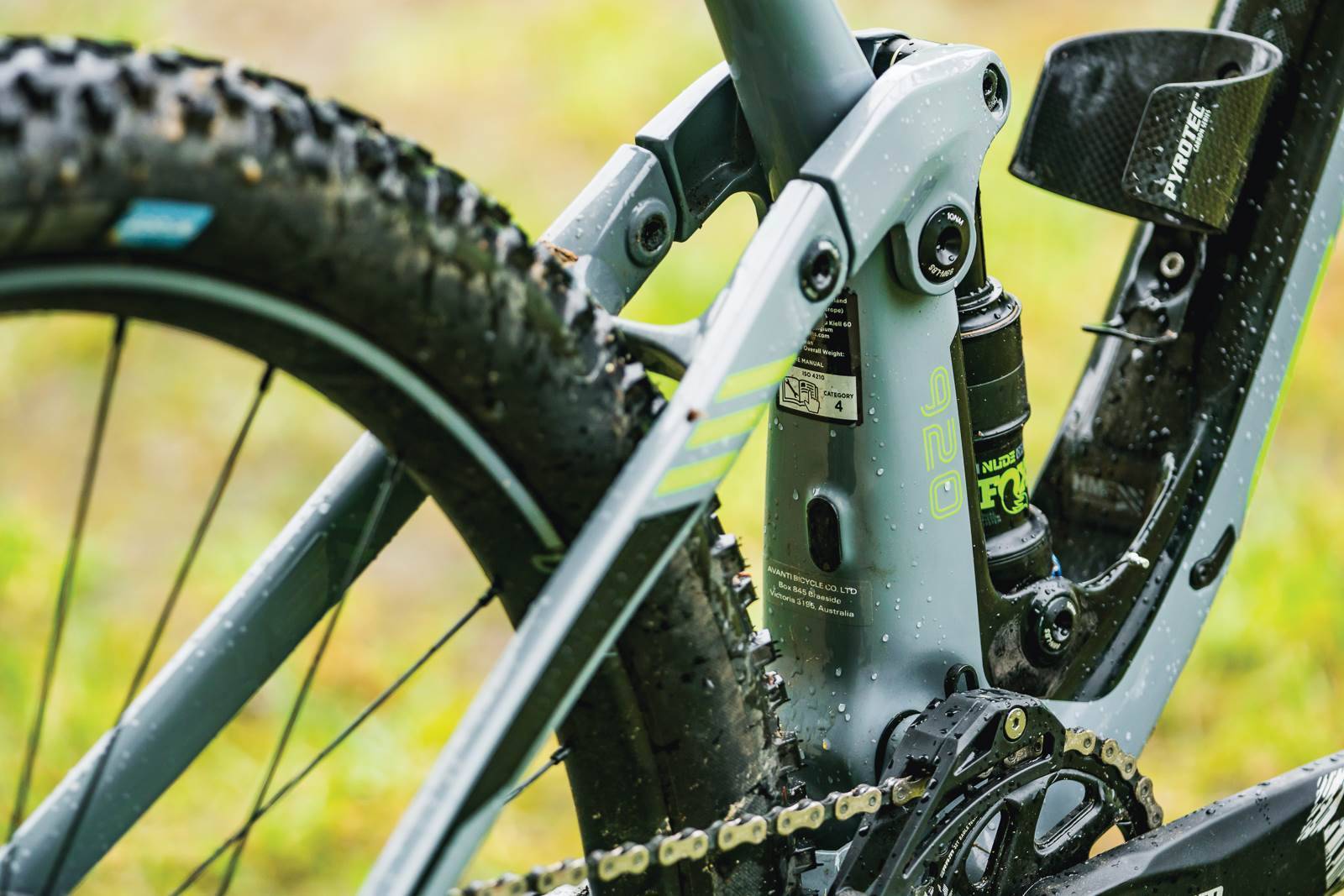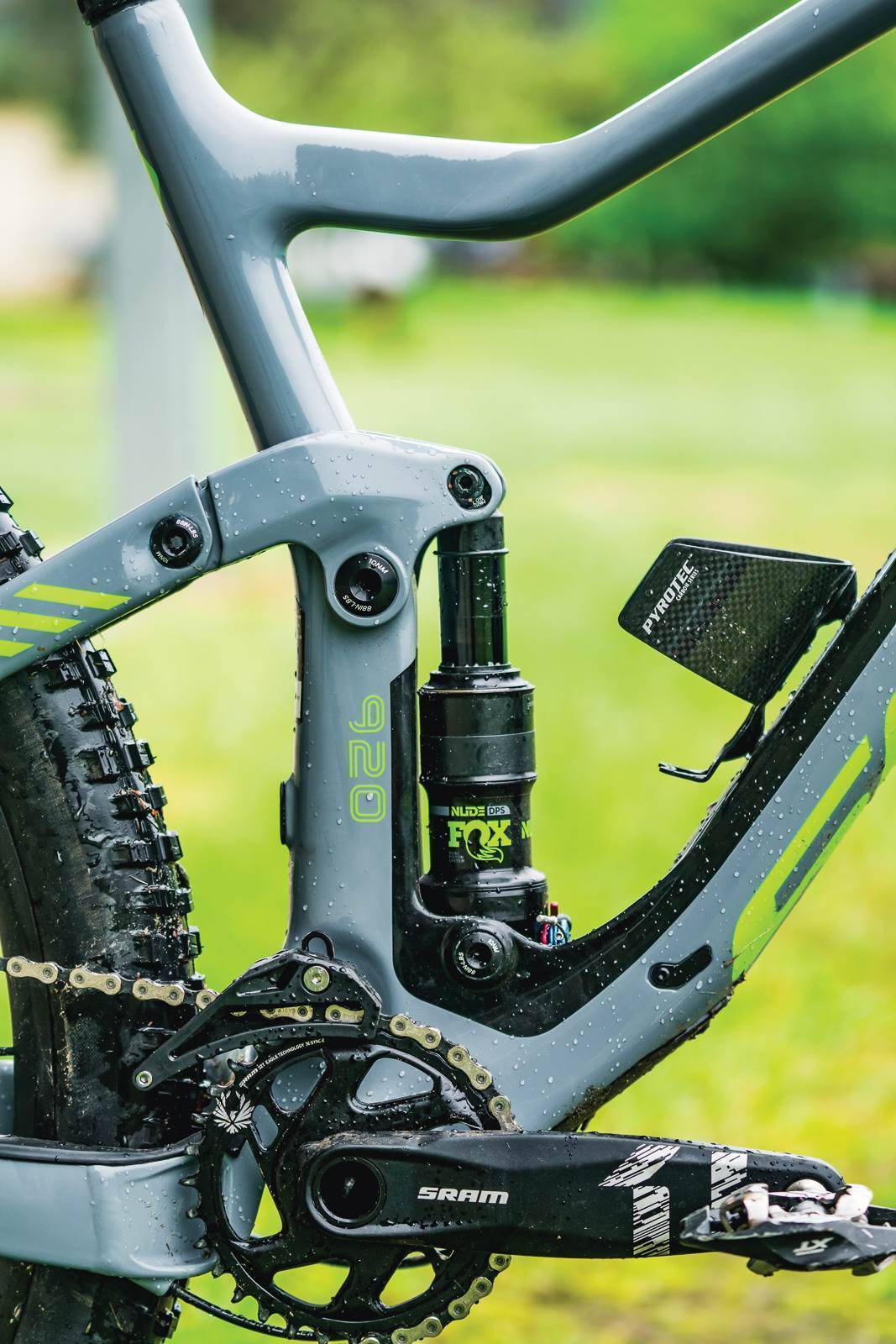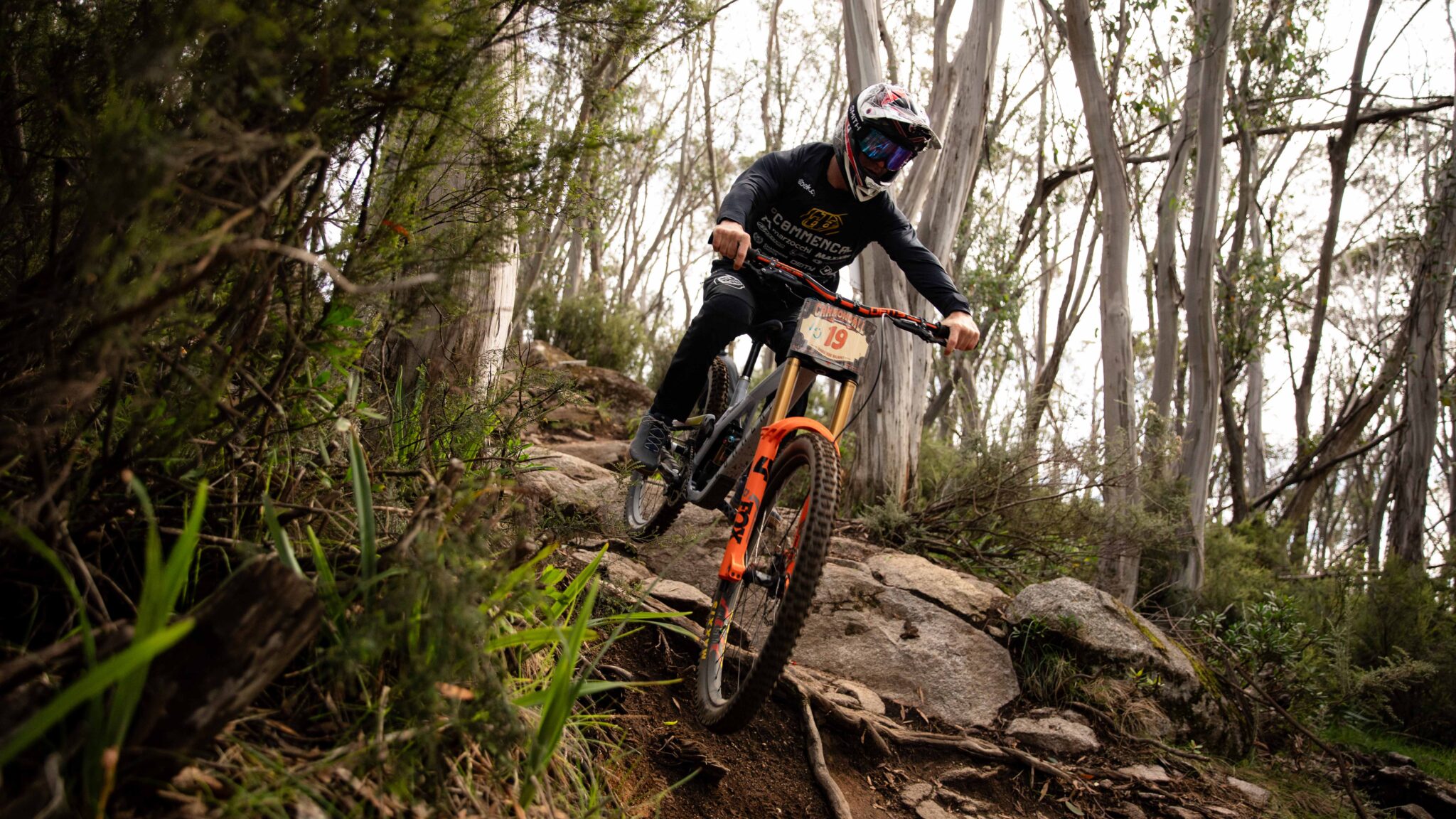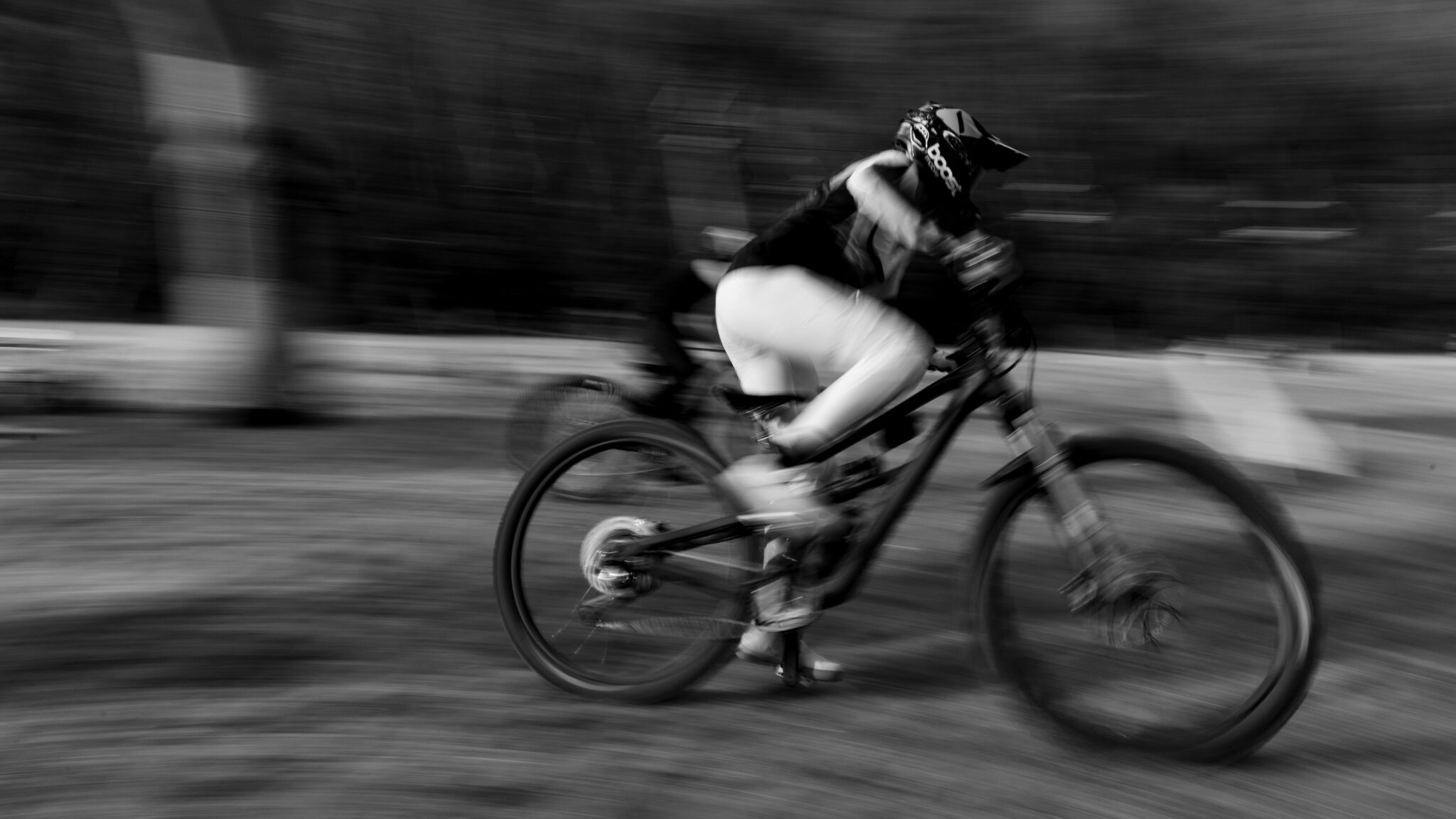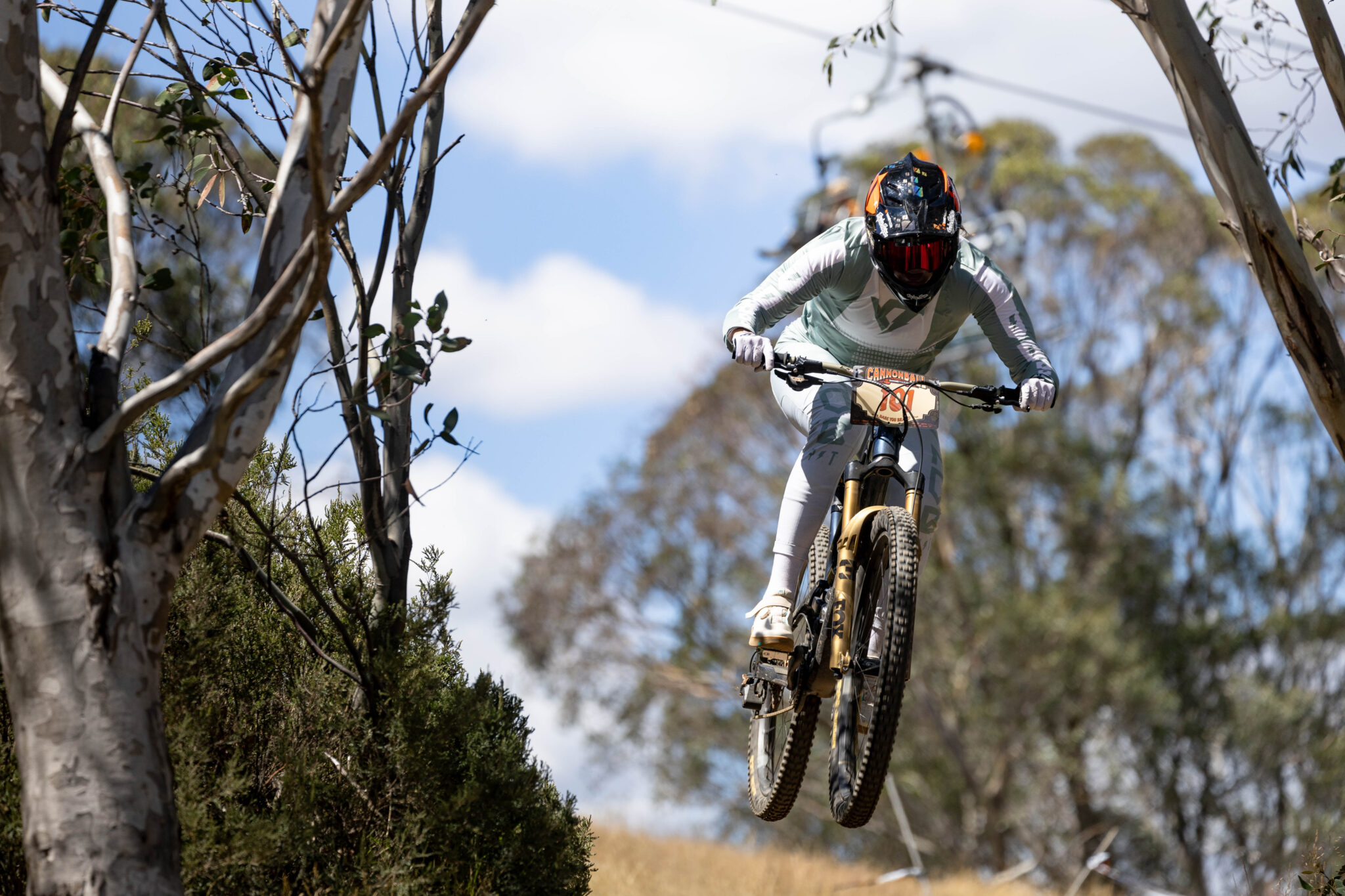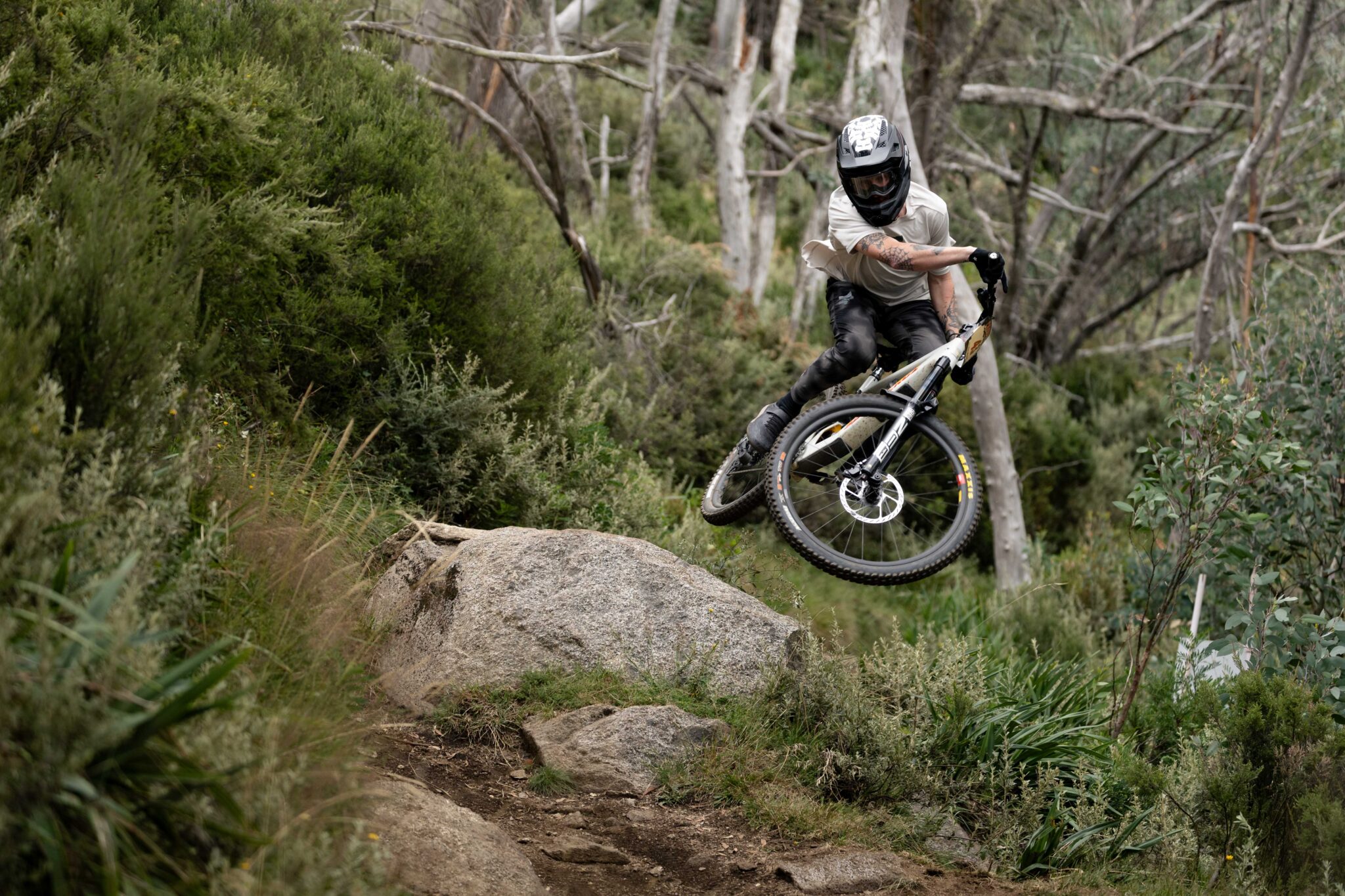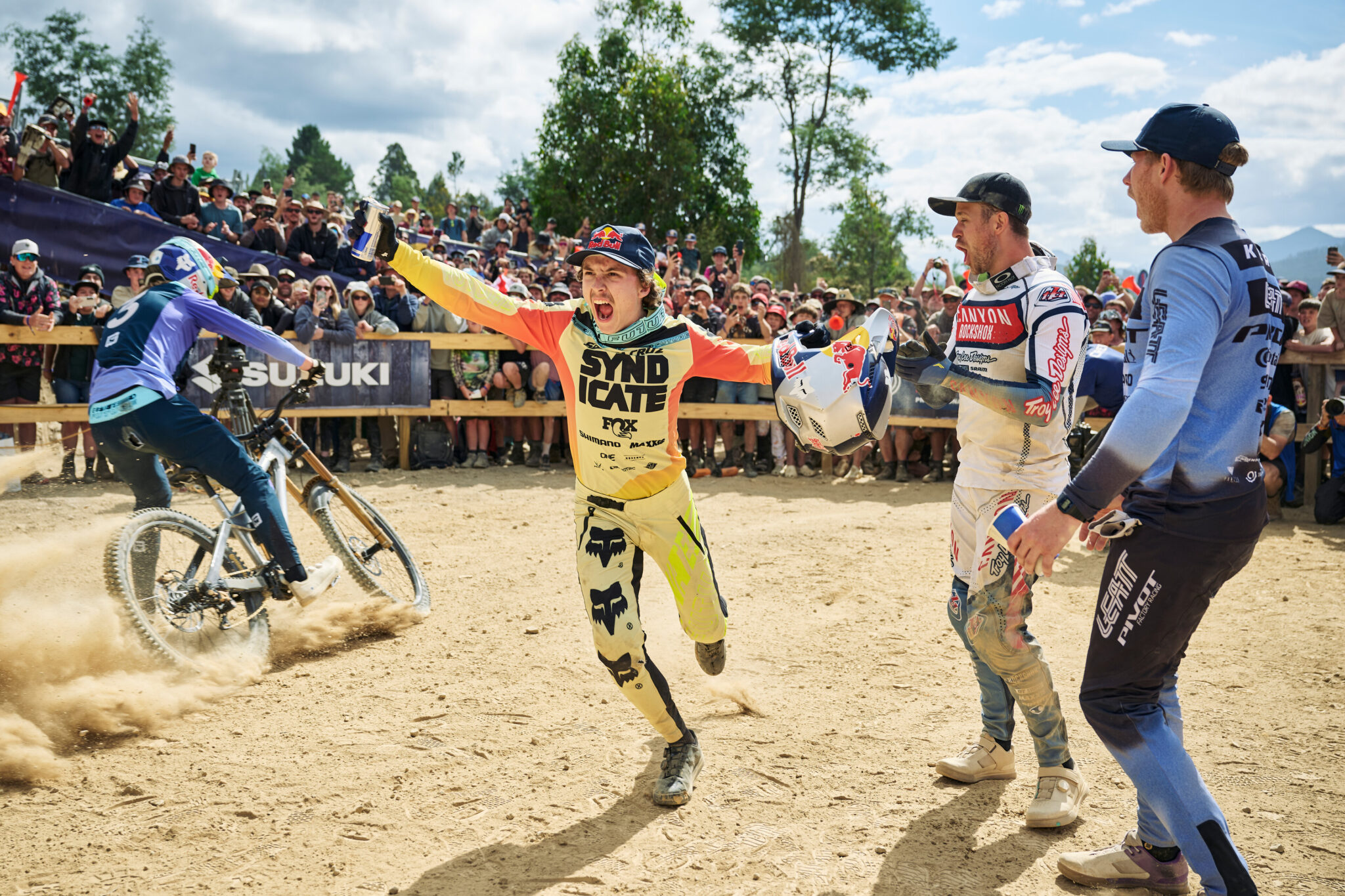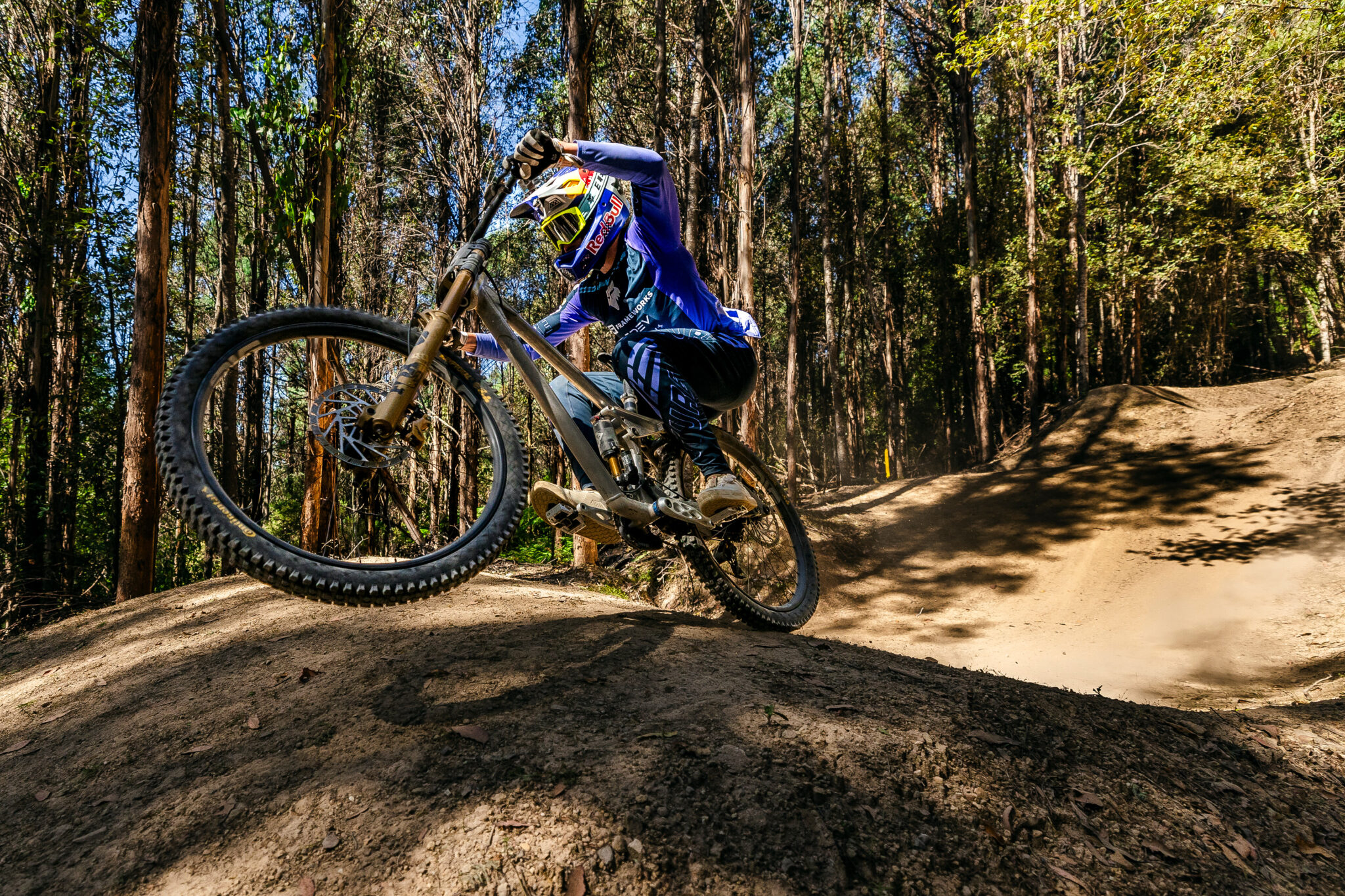TESTED: Scott Genius 920
Adventure is out there and the Scott Genius 920 is ready to give it to you.
Scott bikes might be best known for their race-winning pedigree thanks to stars like Nino Schurter, who won every World Cup XCO race this year, plus the Cape Epic and World Championships. Scott were also the bikes that our own XCO National Champions Bec Henderson and Dan McConnell raced in 2017. Scott also sponsor gravity riders like Remy Absalon and Brendan Fairclough. But away from timed runs and racing elbow-to-elbow between the tape, the Swiss bike company based out of Freiburg have always made great riding bikes for finding your own adventure.
The Scott Genius name goes back a long way. Almost 15 years ago I owned a Scott Genius RC, with 90mm of travel. The Genius MC was the long travel version with 120mm of travel. Both bikes, of course, had 26” wheels. The platform has been through a few iterations since then, and moved more into the trail and all-mountain spectrum once the Spark was launched for 2007.
In the middle of this year, the Genius was overhauled, pulling many of the design concepts from the launch last year of the new Spark. These included trunnion mounted shocks, a Horst link to improve suspension action, Fox suspension units, updated lightweight and stiff frames, more stand over clearance and Boost spacing. Oh, and they made the geometry much longer and more aggressive.
One key thing remains since the first Genius I knew, though, and that’s the Traction Control system (which came with the TwinLoc levers in recent years). With a flick of the lever, you can change the travel on a bike like the Genius from 150mm, to 110mm, or locked out. And the adjustments are similar on your fork too. With on-the-fly adjustability like this, it’s no wonder Scott claim the Genius can ride “any trail, any time”. Models are available in 27.5” wheels or 29”, like the one tested here. You choose the wheel size, and how you ride it. But can Scott truly make one bike to rule them all?
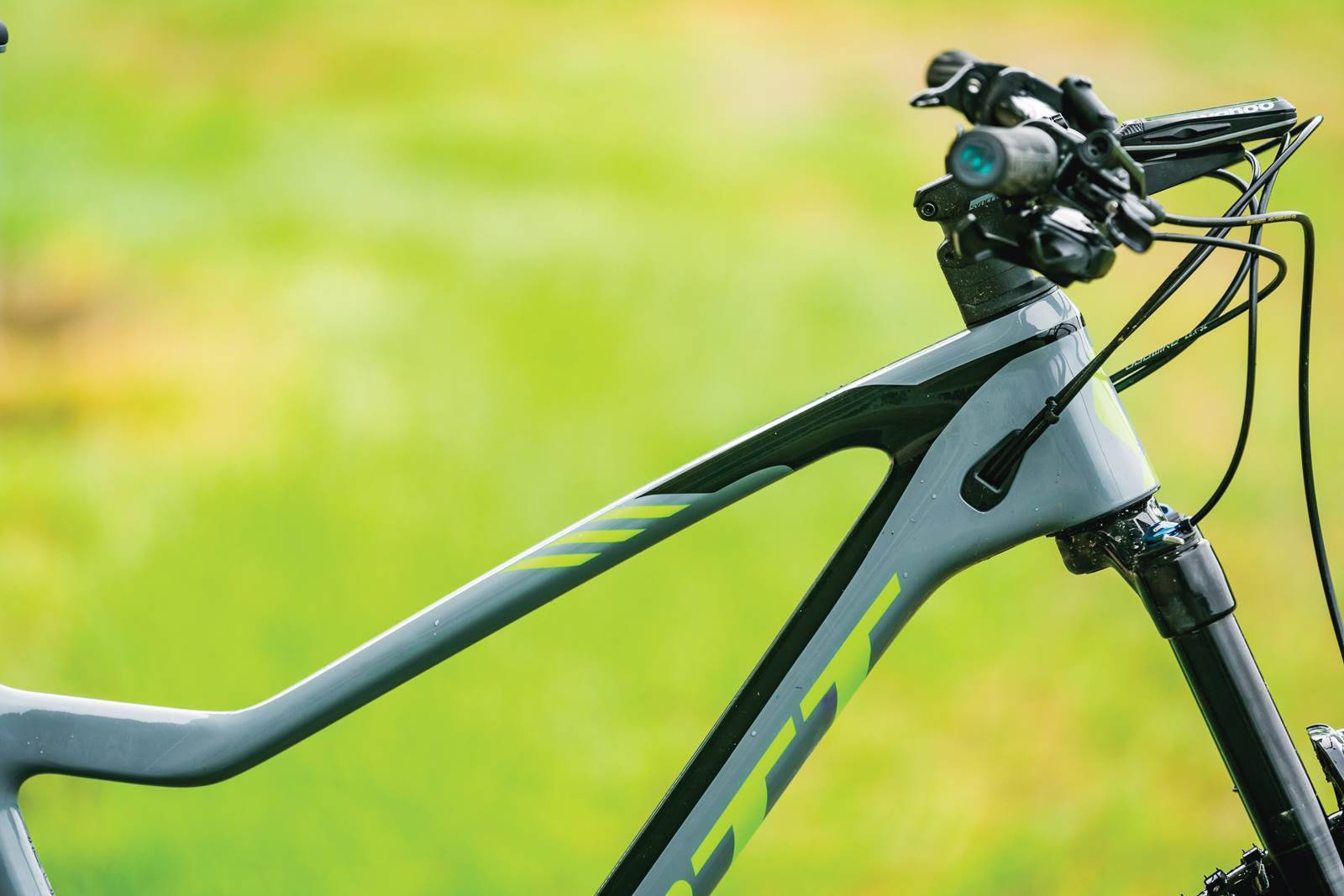
Initial Impressions
Easily the first impression I had of the Scott Genius 920 is how massive it is. Bikes are getting longer, but the 29×2.6” Schwalbe Nobby Nic tyres really make this bike look immense. Much like the Scott Spark, the Genius has the bulk of its size in the downtube, and it increases in stature towards the bottom bracket, where the frame has the trunnion mounted shock sitting into the frame – keeping the weight low and the cabling for the shock completely internal. There’s a neat port underneath the downtube for access. The top tube is quite slender once it moves away from the stout and short head tube. And in profile the bike belies the complexity of the design. It cuts a neat silhouette, and anyone with an eye for design should find the bike very visually appealling.
The TwinLoc is really unique on the Scott bikes, and the lever is cleverly integrated into not just the locking collar for the grip, but also for the Fox Transfer lever too. It means you have a seamless action for reducing travel or locking the suspension out under the bar, with an over the bar action for the dropper. I’m used to an under the bar dropper but it took almost no time at all to switch my thinking around. All three cables need to be at the right tension, though, and with so many cables floating around getting them all in the right place is key to make sure nothing fouls on anything else. I ended up getting the Fox gurus at Cyclinic to tidy up the routing for me.
The suspension has had huge updates, with a Horst link added to make it a true four-bar action compared to the previous Genius. This gives better support in the suspension, instead of sitting well into the travel, and it also gives a more progressive action, which a bike like the Genius needs. The geometry has been radically changed, and this must be one of the longest 29er long travel bikes out there from a major brand. I tested a large and with a top tube of over 630mm, the bike has a reach of 466mm in the low setting. With a 65 degree head angle in the low position (65.6 in the high position) it is a huge departure from the previous Genius which was quite short and a bit steep.
The Syncros wheels come taped and after buying some tubeless valves they were a cinch to inflate tubeless with a track pump. That said, the 2.6” Nobby Nics might not be for everyone, and something closer to a 2.4 or 2.5” tyre might suit your trails. The Syncros rims are wide and give an excellent base for new, wider tyres.
Looking over the bike, the precise design stands out in many places. The main pivot bolt locks into a keyed unit, which is the mount for the included chain device. There’s a neat port on the downtube for 2×11 drivetrains and SideSwing derailleurs, and other models in the range come so equipped.
It’s easy to think of lockout and low weight and associate that with riding on the XC end of the spectrum. But that would be a mistake. With two geometry settings via a chip in the top shock mount, it’s still a slack and long bike. So although the bike can be made to be pretty spritely thanks to the lock out and low weight, it’s when pointing downhill and going fast that the Genius really comes alive.
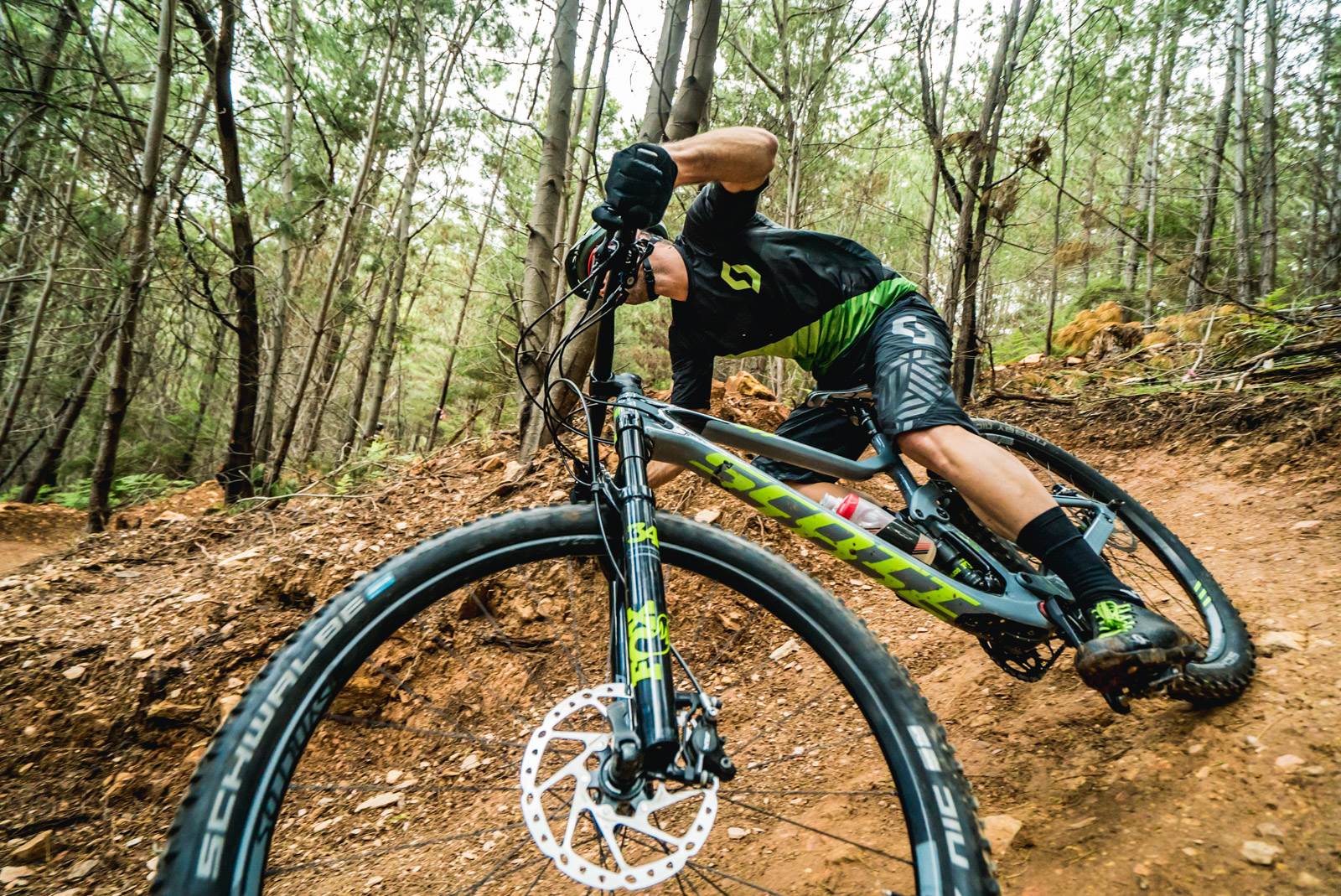
On the trail with the Genius
Getting the Genius up to speed was easy – with a tight back end it springs alive way differently than you would expect. The feeling of the Genius 920 being a big, long bike was really only prevalent when manoeuvering out of buildings and getting the bike into or onto a ute or car. Thanks to the relatively tight 438mm (436mm in the high setting) chainstay length, the Genius 920 is remarkably manoeuverable. It makes it easy to loft the front wheel, and combined with a supportive suspension package, the bike accelerates and changes direction far more easily than you would expect given the wheel base is over 1230mm.
Much of the riding of this bike was done in the Victorian High Country. From Mount Beauty, to Mount Buller, Bright and Falls Creek. The progressive suspension and modern, long geometry meant that even on the fast trails with high speed corners and hits the bike stayed planted when you wanted it to, and calm under pressure. Point down something really steep and with the 150mm dropper slammed and the suspension open you just had to keep it pointing straight to get through.
The TwinLoc is very easy to get along with. At a quick count I have owned 22 Scott bikes since 2005, across road, mountain and cyclocross. And five of them had this system and were the bikes I spent the most time on offroad. Still, I haven’t owned a Scott mountain bike since 2012, and I haven’t used TwinLoc since 2011. But the system is intuitive to use and certainly way better with a 1x drivetrain like SRAM Eagle! The middle position really keeps you sitting high in the travel, which is great on longer pedalling sections as it means you can get away with a low bottom bracket height on a long travel bike. It pedals well fully open but the support in the middle position just feels way better when pointing even a little uphill.
Climbing isn’t the focus of the Genius – but it does it really well. The bike is long and it can be hard to keep the front wheel planted in steep, tight, uphill switchbacks. Clearly the Genius is designed to go down, but it’s a Swiss bike and Swiss riding means up AND down and with quite low weight and a super-efficient suspension design it does handle both really well. If you can keep your weight forward when climbing it really helps – but the higher position is a lot better if your ups demand as much attention as the downs.
We rode a lot of backcountry trails while I was testing the Genius 920, plus a lot of trails that were only just opening up for summer. Sometimes the conditions were great, sometimes we could barely see the trail. The Genius just ate it all up. I followed locals blind on tight trails, and pushed hard on fast descents.
Out of the High Country I threw some narrower tyres on and put the bike into the high position for riding on my local Brisbane trails which are often tighter, and obviously with less elevation. With a little more bottom bracket clearance, and a steeper head angle and seat angle (about half a degree each) the bike suited the tighter trails and shorter descents. I put 2.25” tyres on which was too narrow. On the 30mm internal width of the Syncros rims it meant the tyres (Maxxis Ardent) had the sidewall as wide as the shoulder tread – which means traction disappears when you corner hard. Swapping out to a Minnion 2.5” WT and a 2.35” Aggressor on the back was spot on for my local trails. tyres are a choice best made by you – so consult with your Scott dealer if the stock tyres won’t be right for your trails.
The Shimano SLX brakes didn’t miss a beat all test. With the stock pads and rotors their braking is great, but if you were looking at riding a lot of long, hard descents I’d upgrade to IceTech rotors and consider sintered pads if your trail conditions aren’t always dry. This was my first time on SRAM Eagle and I really rate it. The GX edition is unlikely to be as smooth as the top models, but I had no problems with chain retention or missed shifts. I agree with others who have said that on a bike like this a 34t chainring would make more sense. It was easy enough to end up in the 10 and needing to shift out through lots of gears. A larger chainring would leave you further away from the limit where fewer shifts will get you out of trouble when a pinch climb appears. But this is an easy swap if your riding, legs and goals demand a different gear size.
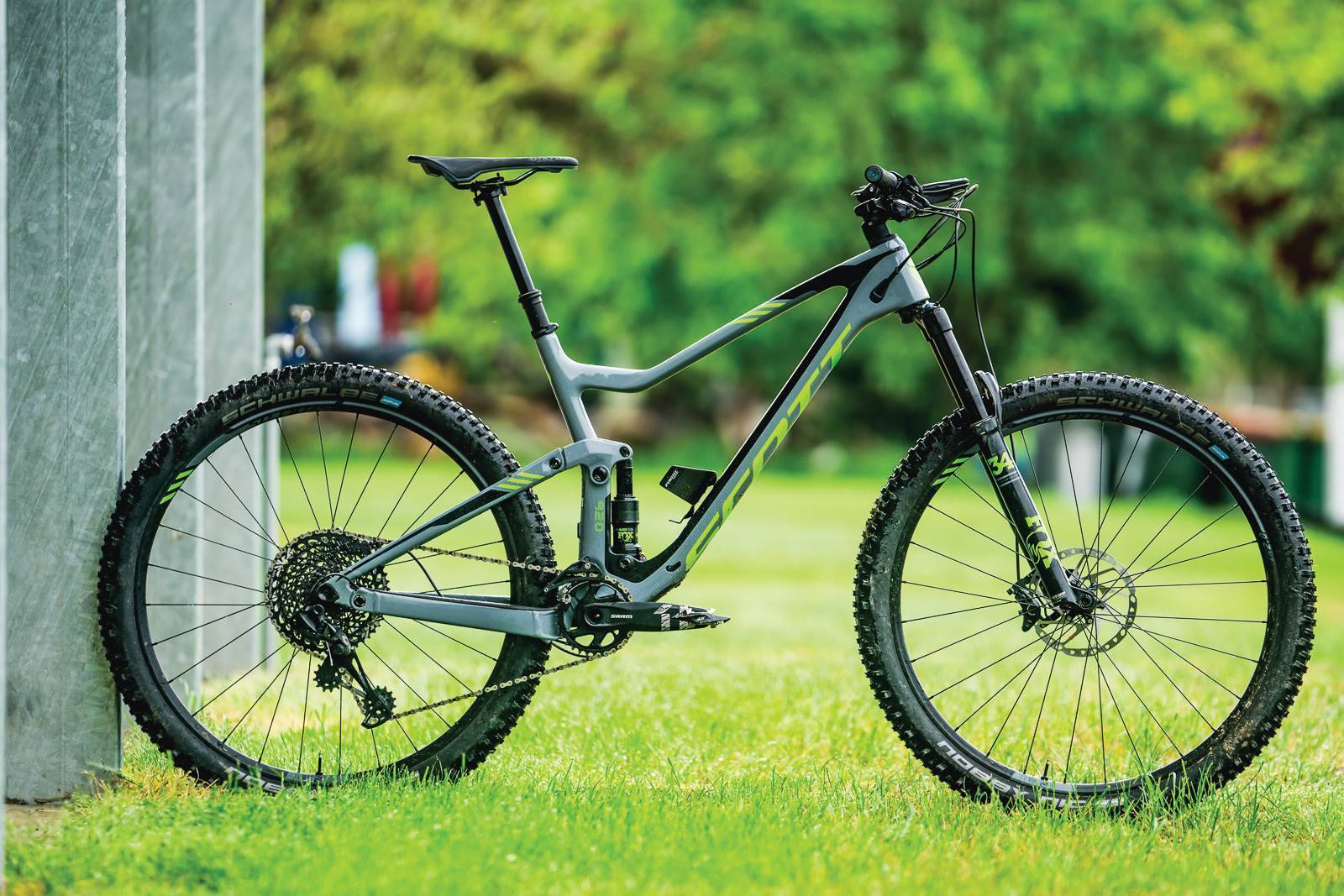
Our Take
The demands of a trail or all-mountain bike are pretty high. We want a bike that is light, climbs well, with a huge gear range. Scott have redesigned their multi-purpose Genius into a bike that really could rule them all. It’s a long bike that handles high-speed descents with aplomb. It’s light, agile, and has the ability to change suspension on the fly. With few things to nitpick, beyond the huge amount of cables at the front, the 920 hits a sweet spot in the Genius range. It’s one of the slackest long travel 29ers from a major brand, showing the research that Scott put into their new models. I think this bike will equally suit the adventurous rider who wants to ride everything available, through to aggressive trail riders and people wanting a bike optimised for descents but more than capable to pedal up.
RRP: $5399
From: Sheppards Cycles

